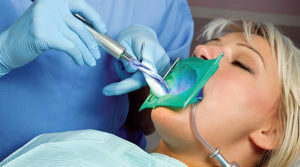 Physiotherapy methods of treatment are used in dentistry for a long time. The impact of electric current helps to solve the problems of dental treatment with minimal negative consequences for the patient's body.
Physiotherapy methods of treatment are used in dentistry for a long time. The impact of electric current helps to solve the problems of dental treatment with minimal negative consequences for the patient's body.
At its core, electrophoresis in the treatment of teeth is a physiotherapeutic method of exposure through the introduction of drugs into the body with the help of weak electrical impulses.
In dentistry, electrophoresis makes it possible to introduce a medicinal substance locally into the diseased organ. In this case, the effect of better penetration to the affected tissues is achieved, the active substance accumulates in the diseased organ as much as possible, and does not spread throughout the body.
Content of
- What is electrophoresis of teeth
- Procedure technology
- Calcium electrophoresis for teeth
- Dosage current
- Indications and contraindications
- Contraindications to use
- Application of electrophoresis to pregnant women
- Use to children
- Advantages and disadvantages of
- Sensations and effect of
- How much does the procedure for electrophoresis
What is electrophoresis of teeth
For the procedure used drugs that are capable of being split by electric currentI on ions and purposefully to get and accumulate locally in places of an inflammation. Due to the high concentration in sick organs, the maximum therapeutic effect is achieved.
Procedure Technology
The physiotherapy procedure is as follows. On the site of inflammation( skin or mucous membrane) electrodes are placed from current-conducting materials. The order of application is longitudinally or transversely the focus of inflammation.
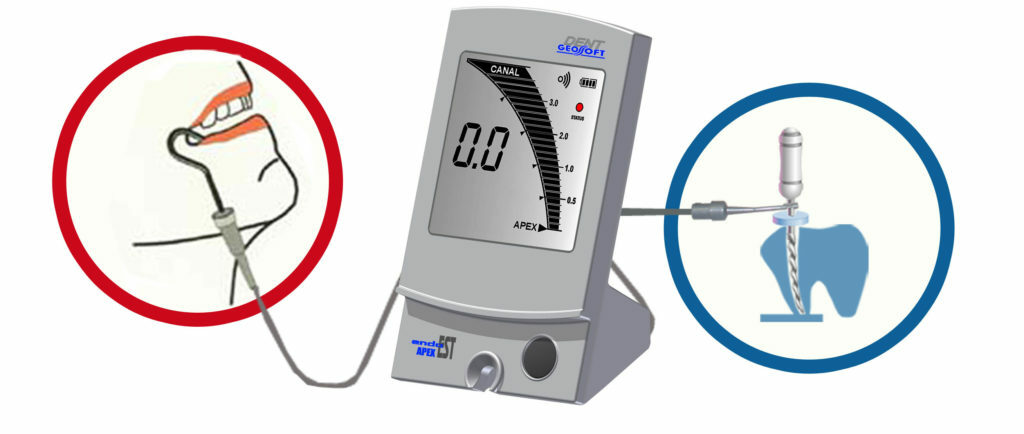
Gaskets with hydrophilic materials( cotton wool, etc.) are applied together with the electrodes on which a solution of medicinal preparations is previously applied. Then the electrodes and gaskets are fixed.
In the treatment of pulpitis, channels must be treated, after which the drug is injected into the cavity of the tooth.
Drugs are injected from the eponymous pole of the device at acceptable concentrations of the solution in the range from 0.1 to 5%.Drugs with a strong effect are introduced from the calculation of a single dosage.
The following components are solvents: 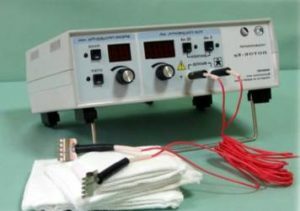
- water;
- buffer solutions;
- Dimexide.
The special apparatus produces a weak direct current through special lining with drugs inside the oral tissues.
The procedure takes 10 to 30 minutes. Course treatment is from 10 to 20 sessions. You can go through the procedures every day or every other day.
Calcium electrophoresis for teeth
To restore the enamel, dentists prescribe electrophoresis with calcium.
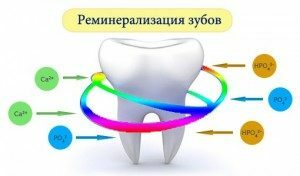 Remineralization of tooth enamel is performed on an outpatient basis and allows to completely restore it. The procedure of electrophoresis with calcium gluconate on teeth compacts the enamel, saturates the surface of the teeth with the necessary nutrients.
Remineralization of tooth enamel is performed on an outpatient basis and allows to completely restore it. The procedure of electrophoresis with calcium gluconate on teeth compacts the enamel, saturates the surface of the teeth with the necessary nutrients.
The hardware introduction of calcium is carried out with the help of electrodes and special solutions.
The patient inserts disposable electrodes into the oral cavity between the gum and the lip. In this case, the terminals for connecting wires from the apparatus are output to the outside.
To close the electrical circuit on the forearm, another electrode is attached, covered with a damp cloth.
In the oral cavity, a napkin between the lip and the lower electrode is moistened with calcium gluconate.
The device is set to the required values. The procedure lasts 20 minutes.
Current dosage
The procedure is performed by a continuous low-voltage galvanic current from 30 to 80 V, the current strength reaches 50 mA maximum.
The current density for adults ranges from 0.03 to 0.1 mA / cm2, for the oral cavity 0.1-0.3 mA / cm2.
Children are treated with a current density of 0.02 to 0.05 mA / cm2.
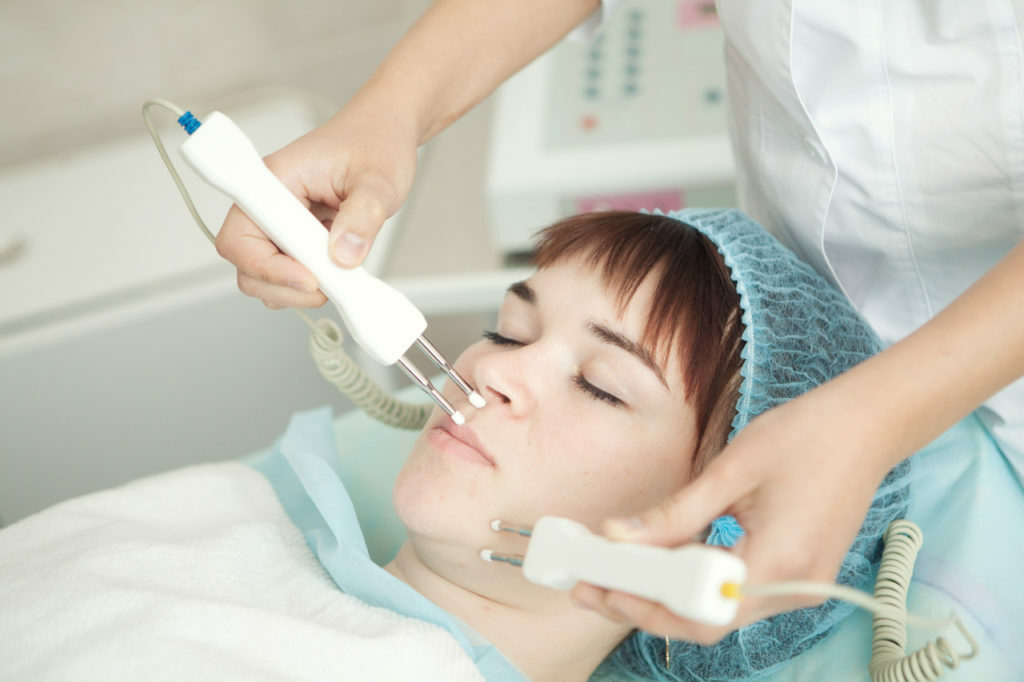
The patient is given an electric current with a gradual increase in strength until painful sensations arise. If the patient feels uncomfortable, the procedure should be stopped or the current strength reduced.
Indications and contraindications
The procedure is prescribed if there are such diseases:
- chronic dental pathology;
- Teeth injury;
- inflammatory processes in the mandibular joints - arthrosis, arthritis;
- inflamed periodontium in the form of periodontitis, gingivitis, periodontitis;
- presence of scars on the skin or mucous membranes of the jaws;
- inflammation of the salivary glands;
- condition after trauma and surgical intervention( tooth extraction, etc.);
- glossalgia is a disease of the tongue and cavity of the company, developing without visible local changes;
- pathological changes in the nervous system - neuralgia, neuritis;
- granuloma, cyst tooth;
- pulpit;
- Inflamed dental cell - alveolitis.
Contraindications to the use of
Not all patients have dentists prescribe a procedure for treatment with electrophoresis. There are a number of limitations when the patient has such diseases and conditions:
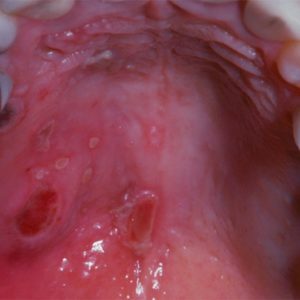
Cancer of the oral mucosa
- pathology of the cardiovascular system;
- sclerotic changes in cerebral vessels;
- bronchial asthma;
- tuberculosis;
- the oral mucosa is affected by cancer;
- built-in pacemaker;
- allergic reactions to injectable drugs;
- cachexia;
- body temperature is increased due to exacerbation of inflammatory and purulent processes in the body;
- bleeding.
Application of electrophoresis to pregnant women
Electrophoresis for pregnant women is the safest method of treatment, since the drugs administered are delivered directly to the infection site without affecting the internal organs. And therefore, they will not harm future mother and fetus.
The procedure can be administered at any time during pregnancy, provided there are no contraindications. Without fail, prior to the appointment of the procedure, it is necessary to receive a referral from the leading gynecologist to the patient.
Application to children
For children electrodes with soldered wires are used. Fixation of electrodes is carried out with bandages.

Children's skin is more sensitive to the effect of direct current, so the current is fed slowly and reaches the set parameters in 3-4 minutes.
The total duration of the procedure for children does not exceed 10 minutes.
The age of the child affects the current density and ranges from 0.03 to 0.08 mA / cm2.
Advantages and disadvantages of
The electrophoresis procedure combines the combined effect of permanent galvanic current and dosage forms. With this method of treatment, complex substances in the solvent are separated into ions both positively and negatively charged.
The solution, getting on the electrode, allows the charged particles to get into the tissues. Such ions have the same polarity with the electrode and accumulate locally in the skin, forming a kind of depot. Along with the skin depot, formation of a tissue depot is also possible.
The skin is characterized by low blood circulation and therefore the ion depot is consumed slowly, thus ensuring the supply of blood to the drug for a long time.
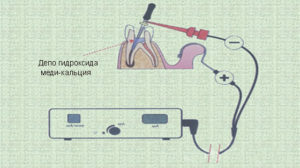
With minimal blood flow to the bloodstream due to high local concentration and increased ion activity under the influence of electricity, biochemical and biophysical processes in problem tissues are activated, which leads to a high pharmacotherapeutic effect.
With electrophoresis, side effects are reduced to the minimum values due to the exact introduction of the necessary drugs in strictly calculated quantities.
The advantages of electrophoresis include such factors as:
- Possibility of entering drugs in ways that are inaccessible to other tissue techniques. With the help of electrophoresis, it is possible to inject medications into the tooth pulp, enamel tissue, dentin, and periodontium in the case of obstruction of the root canals.
- The procedure is practically painless for the patient and allows you to quickly stop inflammation in the tissues and inside the dental canals. The bactericidal effect on the tissue is achieved, infectious foci are eliminated.
- Dentists use electrophoresis as a method of treatment of complicated cases, which allows to accumulate in the inflammatory focus a sufficient stock of drugs with a prolonged period of validity.
To the disadvantages of electrophoresis of teeth is that this method can be applied only to those patients who do not have contraindications.
Electrophoresis is not an independent method of treatment, but is used in conjunction with other methods of treatment.
Sensations and effect of
procedure Patients may feel a certain taste in the mouth with a metallic tinge during the procedure.
There may be a slight tingling sensation during the procedure.
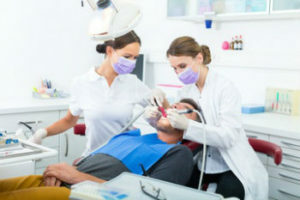 There is a slight irritation on the arm from the electrode, so the hands must be changed at the next session.
There is a slight irritation on the arm from the electrode, so the hands must be changed at the next session.
Patients carry electrophoresis almost painlessly, there are no special uncomfortable conditions.
Positive changes occur in the accumulation. Improved ion exchange of cell membranes, increased microcirculation. With the help of electrophoresis, tooth enamel is practically restored. Foci of infectious inflammation are eliminated, blood supply to the teeth is improved.
How much is the procedure for electrophoresis
The pricing policy of the electrophoresis procedure depends on the use of medicines, equipment, forms of ownership of the medical institution. Private clinics offer patients quality services and, accordingly, prices are slightly different from the services of municipal medicine.
Electrophoresis in dentistry is used as an effective tool for treating patients.
The therapeutic effect is achieved due to complex exposure to electric current and the introduction of medications locally. The protective processes of the body are activated.
